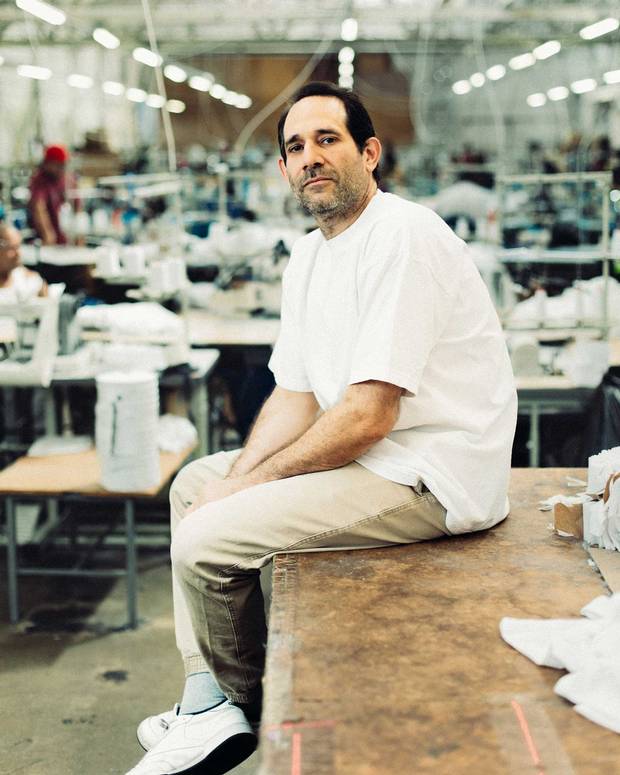
ANDY J SCOTT
Just to be clear, American Apparel was very successful. Nearly all the stores were profitable, we had a vibrant online business, and we paid living wages to our workers. And for 25 years but one, we had positive EBITDA.
There was an attempt to sell the company from underneath me. This hedge fund took control of American Apparel, and then expulcated me and my management team. Within less than a year, they'd trashed the company, and it's been sold for parts.
I'm just amazed Gildan paid almost $100 million for a brand I basically conceived in the basement of my parents' home in lower Westmount. That's a victory in itself.
I wish Gildan the best. I'm really focused on my own journey, which is to produce clothing that people love and can afford, and do so in way that doesn't involve the relentless pursuit of low wages.
I'm prepared to pay $15 an hour, and I can compete with China right now.
The premise of my new company, Los Angeles Apparel, is rapid-reaction urban manufacturing, where I can get an order on Monday and ship it out on Thursday. I can do that because we're in Los Angeles, one of the most densely populated areas in America.
We're rethinking and redesigning the urban experience worldwide. With new technology, living, working breathing, learning, eating, making love—whatever you want to do, you want to be in the centre of the city.
Automation in clothing was more advanced in 1990 than it is now. Because the solution was, We're not going to make clothes here—just send it all down to wherever it's cheapest.
We're not looking to sell to all consumers. This is not pedestrian brand, like Zellers. I'm interested in early adopters. Apple Computers did that—they were always interested in the creative class.
Donald Trump didn't go for the creative class—he went for the late majority.
It's about hiring people with taste. There's an intern who works with me—I don't even know her name. But her taste level, her style of clothing—she's a reflection of what the early majority will look like in 30 months.
If we were to call Statistics Canada in heaven and ask, Who is wearing knits right now?, maybe 90% of the seven billion people on Earth are wearing a knit. There are a lot of people who need knitwear.
You know what really hurt American and Canadian manufacturing? It's not open borders—it's lack of leadership. I made T-shirts in the Carolinas for 10 years. We could get samples from China in three days. It would take three weeks to get them in the Carolinas.
The government needs to start training people how to run these facilities. The anglo-American has become lax, lazy and untrained in manufacturing.

ANDY J SCOTT
If Steve Jobs were 25, he'd say: Why are we going to go to China? Let's do it here!
I'm at my factory seven days a week. I love it. I'm on vacation right now. You know when I wasn't on vacation? When I lost control of my company.
I think it is radically insane that such a character as Donald Trump could take control of the presidency of the United States. He is an amateur in terms of his understanding of manufacturing and industrialism. I don't even think he has firm understanding of the strengths of American culture.
If we're going to make America great again, we're going to do it by welcoming immigrants.
As a Quebecker, I was always suspicious of nationalism.
The problem with boards today, they're in cover-your-ass mode. Contrarian thinking gets diluted, so any company I have, I will have very tight control.
What happens when you try to do something too different? Steve Jobs gets fired. You fired the genius of the age, moron!
I don't want to give people the impression they shouldn't take their company public. But there is a downside to ongoing public disclosure, especially in the age of the 24-hour media cycle. Sometimes it's a pain in the butt.
Want to interact with other informed Canadians and Globe journalists? Join our exclusive Globe and Mail subscribers Facebook group